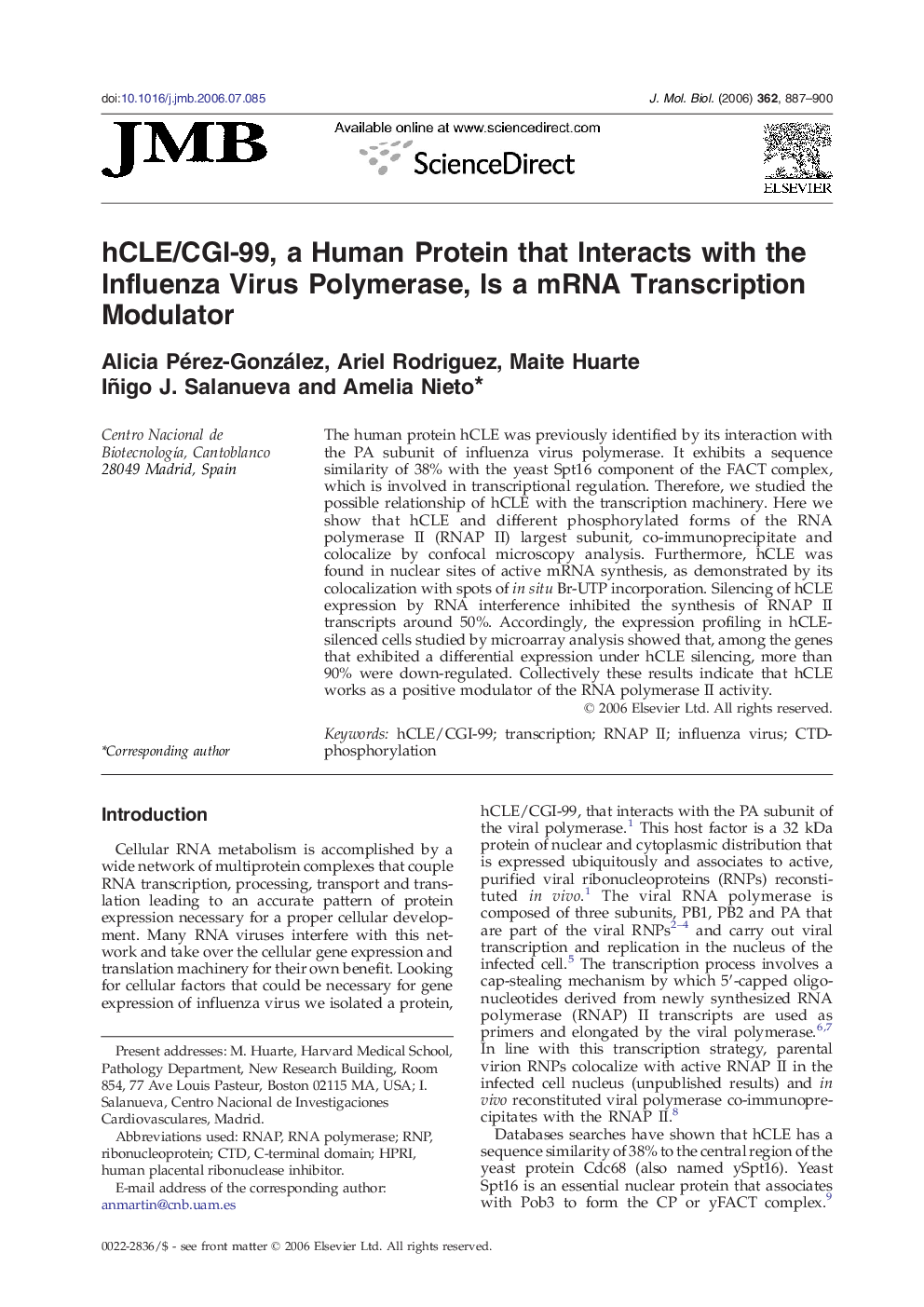| Article ID | Journal | Published Year | Pages | File Type |
|---|---|---|---|---|
| 2188852 | Journal of Molecular Biology | 2006 | 14 Pages |
The human protein hCLE was previously identified by its interaction with the PA subunit of influenza virus polymerase. It exhibits a sequence similarity of 38% with the yeast Spt16 component of the FACT complex, which is involved in transcriptional regulation. Therefore, we studied the possible relationship of hCLE with the transcription machinery. Here we show that hCLE and different phosphorylated forms of the RNA polymerase II (RNAP II) largest subunit, co-immunoprecipitate and colocalize by confocal microscopy analysis. Furthermore, hCLE was found in nuclear sites of active mRNA synthesis, as demonstrated by its colocalization with spots of in situ Br-UTP incorporation. Silencing of hCLE expression by RNA interference inhibited the synthesis of RNAP II transcripts around 50%. Accordingly, the expression profiling in hCLE-silenced cells studied by microarray analysis showed that, among the genes that exhibited a differential expression under hCLE silencing, more than 90% were down-regulated. Collectively these results indicate that hCLE works as a positive modulator of the RNA polymerase II activity.
